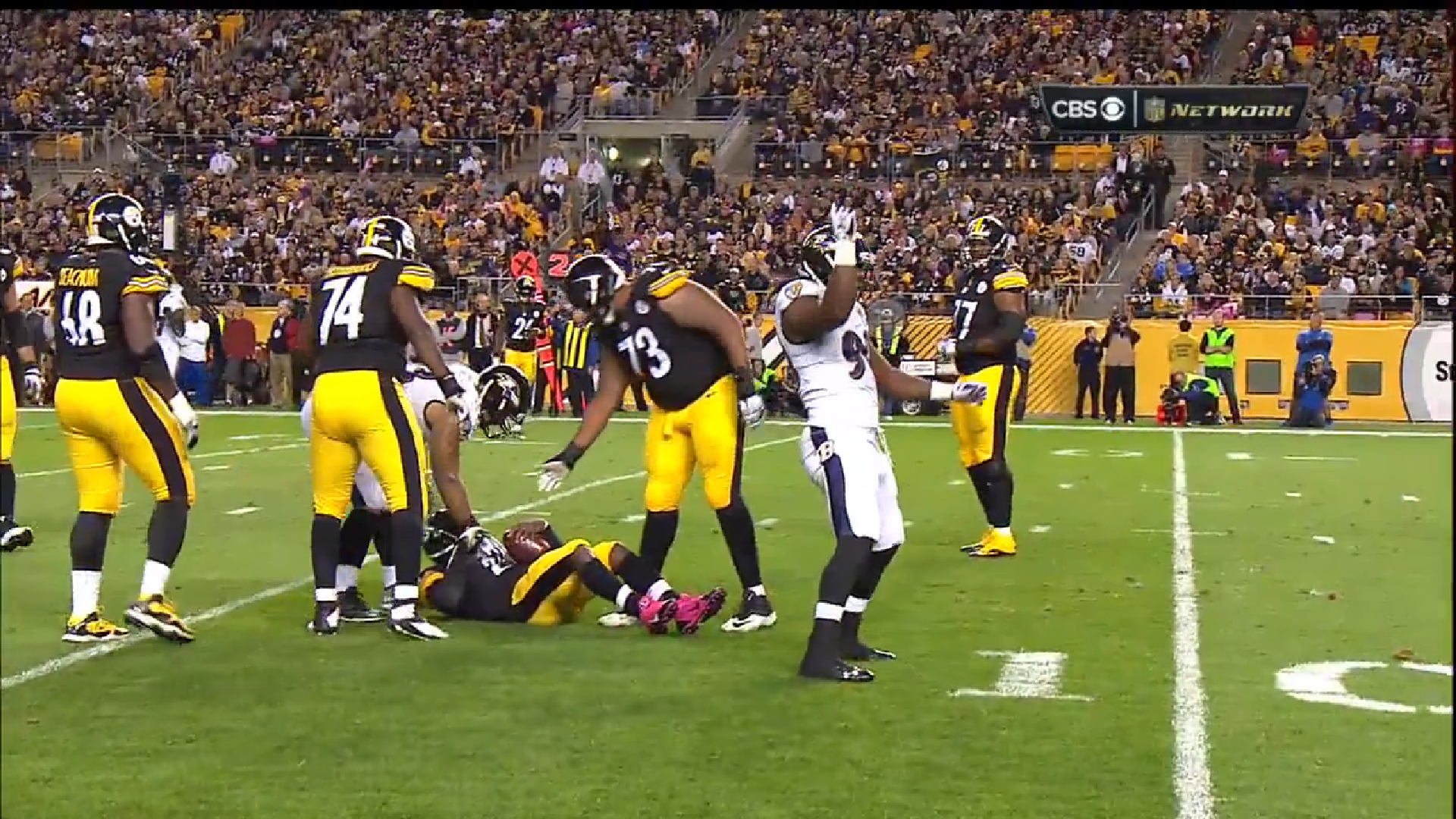There is no singular player on which the success for failure of the Pittsburgh Steelers rides over the course of the next few weeks than Michael Vick, who is the team’s starting quarterback until Ben Roethlisberger is able to return from a sprained MCL suffered last Sunday.
The 35-year-old veteran made his first start with the Steelers on Thursday night in a tough overtime loss against the Ravens, during which his numbers looked better than his actual performance, with a special mention going to his completion percentage.
Vick finished with a high completion percentage, to be sure, but he averaged just 4.8 yards per attempt, and while he did not turn the ball over, he almost threw one interception and fumbled a snap that he was able to recover.
Statistics do not tell you the full story, however, and with that in mind it will be valuable to take a look at some of the plays from the Ravens game that highlight some of the decision-making failures that led to the Steelers’ struggles in that game.
Early in the game, the Steelers were driving the ball well after several nice runs and a long completion as they approached field goal range. On second and seven, Vick rolled out to his left where Le’Veon Bell motioned before the snap to hit him on the pass for two yards. He never looked to his right to see tight end Heath Miller uncovered for what would have been a first down.
On the following third-and-five play, Vick took off running instead of looking to Bell, who was already behind the linebacker in shallow coverage for what should have easily cleared first-down yardage. The quarterback was brought down after three yards as the offense settled for a field goal.
Toward the end of the second half, with the Steelers looking to get back on the scoreboard, Vick chose to scramble again on first down, gaining four yards. After rolling out to his left, he never turned his eyes across the formation to find a waiting Bell wide open in empty space with the opportunity for a big gain if he could make one linebacker miss.
The veteran also showed a worrying lack of pocket presence and a sense of the pressure around him, which contributed to each sack that he took. Perhaps the most textbook example came midway through the third quarter on second and 10 at the Steelers’ 20-yard line.
With max protect in, it’s true that he had no enticing options to throw to, but he allowed himself to be sacked more than six seconds after the snap without any initial pressure on a deep drop. He also contributed to his being sacked on the third down play that followed.
In the fourth quarter, Vick was quick to settle on the dump off pass to Bell with a linebacker closing in coverage to make the stop for a three-yard gain. He failed to observe Miller opening up in a wide window behind the linebacker for what could have been a nice gain. Had he looked to his far right, he also would have seen Antonio Brown open with separation. On third and four, the following play, he failed to lead his receiver on a pass out to the flat that gave him the opportunity to turn and run, resulting in a three and out.
It’s worth noting that on third down prior to the first missed field goal, Vick chose to target Sammie Coates in spite of the rookie facing tight coverage while Darrius Heyward-Bey was gaining separation on a corner route for what should have been an easy completion and first down at around the 20-yard line.
Finally, on the first play of overtime, Vick nearly threw an interception targeting Heyward-Bey on a deep hitch. Fortunately, he hung the ball short, perhaps as a late reaction to realizing that the corner was on the route and ready to jump it.
These are some of the key examples highlighting the issues that Vick struggled with above the neck in his first start with the Steelers, refraining from touching on mechanical, fundamental, or physical concerns. The Steelers are hoping to find him better prepared—and more trusting of his playmakers in Bell, Brown, and Miller—than he was last week.













